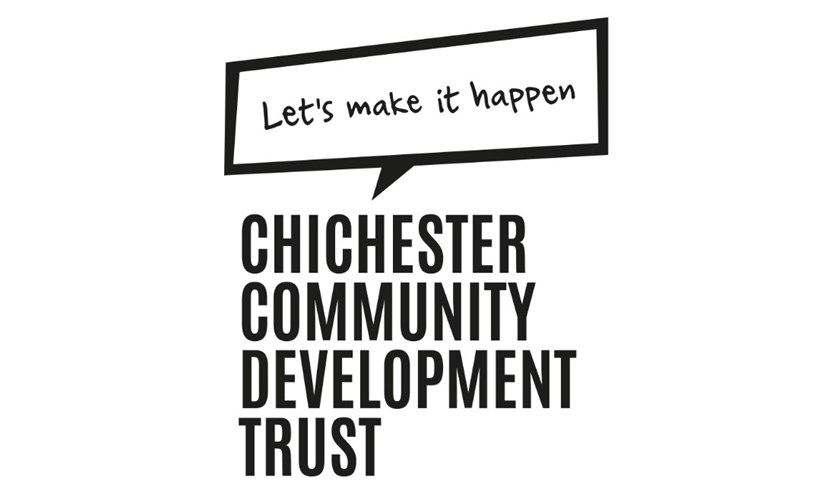Written by:
Back in 2017, members of the Chichester Community Development Trust attended our Buildings by Design training course, delivered through our Empowering Design Practices research project. At our training, they explored design ideas for the Graylingwell Chapel, a building in the Trust’s care that has since undergone extensive refurbishment and is now operating as a valued resource for its local community.
We spoke to them recently and invited them to share some of their lessons learnt through our blog. Here are some of their observations and top tips:
The chain of organisations involved from initial planning to running a completed community building is currently too long and disparate. It is vital that more parties engaged in this ecosystem work together to create a more cogent strategy from the outset, otherwise unintended consequences result in communities not getting what they deserve.However, with open minds and conversations, a great deal is possible. As state subsidies for provision of much of the care given to the communities diminishes, leaving so much in the hands of commerce and charities, it has never been more important to talk.
Mapping Community Need From the Start
Community buildings are the perfect illustration of this imperative. Property developers are obligated to build and deliver community facilities, with many observing standard templates (such as sports pavilions or multi-use community buildings) to simply meet their obligations. With the best of intentions, these spaces being built as ‘multipurpose’ as possible often renders them almost entirely unfit for any purpose, with unnecessary doors, toilets and small, impractical spaces. What is needed is consultation to first establish need and purpose, and then an effective community-led design can follow.
Following over ten years of experience of transforming new; disused; or under-used spaces across the UK into thriving community spaces, at Chichester Community Development Trust (CCDT) the team is working to change this design process. We want to help developers see the value in first understanding what the community will look like, the local needs and what’s lacking from current provision, and then engage with them to co design these spaces. Also integral is involving partners that will provide the service delivery if the building is owned and managed by a community development trust or management company. By engaging and empowering the delivery partner the space will become even more transformative. More enabling. More valuable to the communities in greatest need.
Investment and Collaboration
So often foundations and developers seek to introduce and fund something ‘new’ – that sense of shiny innovation, but oftentimes what is really required is to help facilitate existing programmes that have proven need and fulfilled demand but lack the appropriate space to make things really happen.
For all these pieces to fall into place – for the full collaboration of the multiple partners involved in the transition from first planning drawings to those facing deprivation receiving hands-on support on site, it is vital that community development trusts or similar organisations have a seat at the table when developments are planned. A voice that will represent those that will access the spaces and have that broader local network and understanding of needs.
Community focussed organisations engaged in council economic and development plans, and property developers scoping projects opens the door to enabling social enterprises and community businesses to be part of the place making process to tackle the challenges of a society rather than proffer well-meaning, tick-boxed delivery of ‘community’ buildings. If Heads of Terms were agreed at the time of planning rather than vague business plans for general purpose usage, then spaces could be tailored, designed for need and create healthy homes and communities.
Sustainable Solutions
Let’s end the assumption of need for another football pitch before an assigned sports club has demonstrated demand. A badminton court, or a multi-use community centre. Let’s share vision and hope and ask people what they want. What would they engage with? Let’s create pack-up-and-play pre-schools enabling greater numbers to secure childcare that is reducing in availability as demand increases, with a cricket pavilion or youth hub in the evenings and weekends. Engage increasingly isolated men with a beer brewing project. Lose the generic estate managed hire space and create a health and wellbeing space for mind body wellness and one to one therapy to get to the heart of people’s challenges, and provide practical tools to feel better, tackling issues of increased waiting times and rising stress levels.
Provision of community services in such spaces must always be sustainable and financially viable, with a social enterprise model preventing excessive grant dependency but with experience, knowledge, a network of all those involved in the process and sufficient planning preparation, all of which is possible. There are exciting models of such projects already created around the UK and the sharing of such best practise can inspire us all. CCDT itself works with many developers and social housing companies across the UK to better understand just how to bring about such positive change. The next steps must be an integration of such thought and experience earlier in the process to banish the waste of time and facilities brought about by insufficient collaboration in planning.
This blog was written by Claire Robinson, Partnerships Director at Chichester Community Development Trust.

